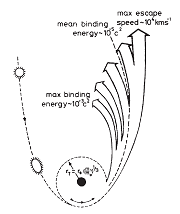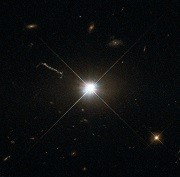 We now know that quasars are some of the most luminous — and often some of the most distant — objects in the Universe, powered by massive black holes that are actively accreting matter. However, this was not always common knowledge among astronomers. Fred Hoyle, Geoffrey Burbidge and Wallace Sargent in a series of papers in 1966 investigated the question of whether quasi-stellar objects are local to our Galaxy or are indeed far away from us. Considering its flux variability, they arrived at the puzzling conclusion that if the object lies at cosmological distances, then relativistic particles should be produced in situ! By what process that could happen was unclear at the time. Image credit: ESA/Hubble & NASA
We now know that quasars are some of the most luminous — and often some of the most distant — objects in the Universe, powered by massive black holes that are actively accreting matter. However, this was not always common knowledge among astronomers. Fred Hoyle, Geoffrey Burbidge and Wallace Sargent in a series of papers in 1966 investigated the question of whether quasi-stellar objects are local to our Galaxy or are indeed far away from us. Considering its flux variability, they arrived at the puzzling conclusion that if the object lies at cosmological distances, then relativistic particles should be produced in situ! By what process that could happen was unclear at the time. Image credit: ESA/Hubble & NASA
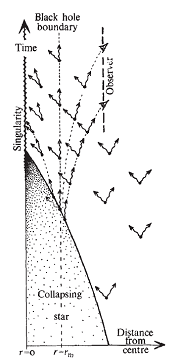 By 1972, there were indications that quasi-stellar objects were indeed powered by accreting black holes. Nonetheless, this scenario was still considered controversial, and unambiguous evidence for the existence of black holes was still far off in the horizon. Roger Penrose wrote an article to familiarize black holes with Nature readers. He covered topics that included the fact that light cannot escape a black hole, some black holes may be rotating and naked singularities may exist. However, the energy conversion efficiency apparently associated with black holes still remained a mystery. Accretion of matter had yet to assume its place in our paradigm of quasars.
By 1972, there were indications that quasi-stellar objects were indeed powered by accreting black holes. Nonetheless, this scenario was still considered controversial, and unambiguous evidence for the existence of black holes was still far off in the horizon. Roger Penrose wrote an article to familiarize black holes with Nature readers. He covered topics that included the fact that light cannot escape a black hole, some black holes may be rotating and naked singularities may exist. However, the energy conversion efficiency apparently associated with black holes still remained a mystery. Accretion of matter had yet to assume its place in our paradigm of quasars.
Martin Rees discussed stars being disrupted and swallowed whole by massive black holes residing at the centres of galaxies. This study was motivated by the apparent discrepancy presented by the measured stellar orbits in nearby galaxies and the relative nuclear quiescence of these galaxies. The former implied that a central massive object lies there whereas the latter indicated that even though stars were within reach of the black hole and could potentially be disrupted, no appreciable observational signature was produced. He showed that the two are indeed not mutually exclusive. Further studies have now revealed the relative rarity of such tidal disruption events (one such event every ten to a hundred thousand years per galaxy).
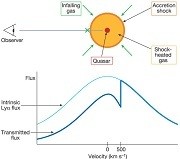 How black holes grow, especially those found at the edge of the observable Universe, has been a persistent question since we observed quasars only less than a billion years after the Big Bang. In 2003, Laura Ferrarese discussed a study by Barkana and Loeb predicting that quasars are fed by hydrogen collapsing towards the black hole at the centre of massive dark matter haloes. This study was motivated by the double-peaked Lyman-alpha emission lines in the spectra of distant quasars. Only a couple of years later, cosmological simulations would reveal that massive quasars sit at the intersection of cosmic filaments and populate some of the most massive dark matter haloes at those epochs.
How black holes grow, especially those found at the edge of the observable Universe, has been a persistent question since we observed quasars only less than a billion years after the Big Bang. In 2003, Laura Ferrarese discussed a study by Barkana and Loeb predicting that quasars are fed by hydrogen collapsing towards the black hole at the centre of massive dark matter haloes. This study was motivated by the double-peaked Lyman-alpha emission lines in the spectra of distant quasars. Only a couple of years later, cosmological simulations would reveal that massive quasars sit at the intersection of cosmic filaments and populate some of the most massive dark matter haloes at those epochs.
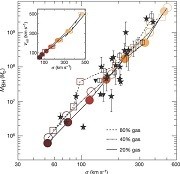
The turn of the millennium saw the emergence of a new paradigm of the role that black holes play in regulating not only the matter around them but also their host galaxies in their entirety. Following a number of scaling relations linking the mass of black holes with the mass of their hosts, Tiziana Di Matteo, Volker Springel and Lars Hernquist showed that actively accreting black holes can expel large amounts of energy that both quench ongoing star-formation in their hosts and stop their own growth. A key element of this scenario were galactic mergers that provided the necessary dynamic instabilities and gas reservoirs for both star formation and black hole activity to commence.


